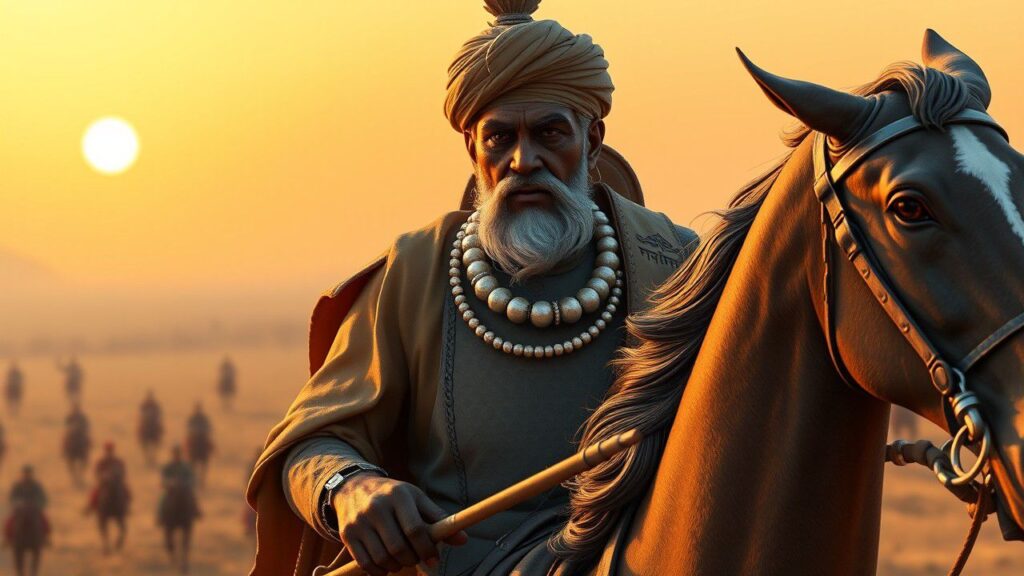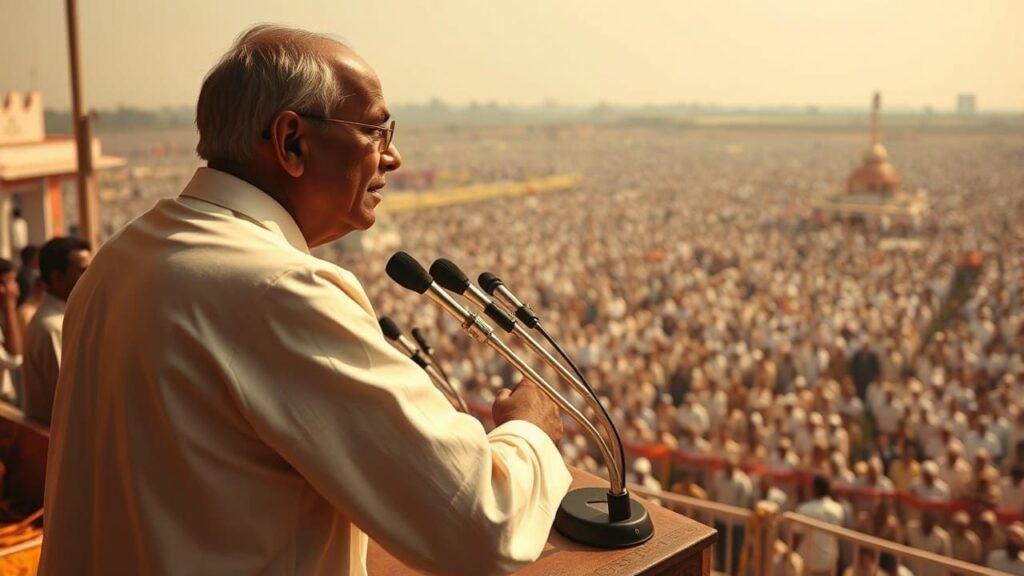Bihar: Where history meets legacy and culture!
Bihar is not just another state in India—it is India’s historical backbone. From ancient empires to the freedom struggle, Bihar has played a central role in shaping India’s history, politics, and culture. Every major turning point in Indian history has Bihar at its core.
This article tells the story of Bihar’s past and how it helped shape India’s history.
1. The Cradle of Indian Civilization (Prehistoric – 6th Century BCE)

Before there were kings and empires, people lived in small groups, hunted animals, and grew crops. Bihar has some of the oldest human settlements in India.
A. Stone Age Settlements
Chirand, Barabar Caves, Lakhisarai – Places where early humans lived in Bihar.
They used stone tools and learned how to grow food and raise animals.
B. Neolithic Culture
People built houses, farmed the land, and domesticated animals.
This was the start of villages and small communities.
C. Bronze Age & Iron Age
People learned how to use metals like bronze and iron.
Magadh (a kingdom in Bihar) started growing into a powerful region.
Why is this important? → Bihar was one of the first places in India to move from small villages to organized kingdoms.
2. Ancient Bihar (6th Century BCE – 12th Century CE)
A. Rise of Mahajanapadas (6th Century BCE – 4th Century BCE)
Bihar was home to Magadh, one of the 16 Mahajanapadas, which later became the dominant power. Vaishali, the capital of the Licchavis, is known as the world’s first republic. Magadh flourished under rulers like Bimbisara and Ajatashatru, who expanded its territory and strengthened its administration.
B. The Maurya Empire (321 BCE – 185 BCE)
Chandragupta Maurya established the Maurya Empire, making Pataliputra (modern Patna) its capital. Under his rule, Magadh became the center of political and military power. His advisor, Chanakya, authored the Arthashastra, a treatise on statecraft and economics.
His grandson Ashoka is known for his extensive military conquests, efficient governance, and patronage of scholars. His empire was one of the largest in Indian history. The Edicts of Ashoka provide insights into administration, law, and ethics during his reign.
C. The Gupta Empire (4th Century CE – 6th Century CE)

The Gupta Dynasty brought Bihar into the Golden Age of India. Chandragupta I and Samudragupta expanded the empire, while Chandragupta II (Vikramaditya) made Pataliputra a hub of learning and culture. The Nalanda University was established, attracting scholars from China, Korea, and Persia.
During this period, Aryabhata revolutionized mathematics and astronomy, Kalidasa contributed to Sanskrit literature, and advances were made in medicine, metallurgy, and architecture.
D. Post-Gupta & Pala Dynasty (6th Century CE – 12th Century CE)
After the decline of the Guptas, Bihar was ruled by the Pala Empire (750 CE – 1174 CE), which was a strong patron of Buddhism. The Vikramshila and Nalanda Universities thrived under the Palas, attracting scholars like Atisha and Xuanzang.
3. Medieval Bihar (12th Century CE – 18th Century CE)
This was a dark time for Bihar. Many foreign invaders attacked and destroyed its great universities and cities.
A. Delhi Sultanate (12th Century – 16th Century CE)
In 1193 CE, Bakhtiyar Khilji invaded Bihar, destroying Nalanda and Vikramshila Universities. Bihar became a provincial region under the Slave, Khilji, and Tughlaq dynasties of the Delhi Sultanate.
B. The Mughal Period (16th Century – 18th Century CE)
Exploitation Under Akbar
Under Akbar, Bihar became part of the Mughal administration. However, instead of benefiting, the region suffered heavy taxation and resource extraction.
The Zabt system placed a crushing burden on farmers, leading to frequent famines and economic hardship. Patna, though a major trade center, was heavily exploited. Valuable goods like opium, silk, and saltpeter were taken for Mughal trade, while local industries declined.
Shah Jahan’s Neglect & Bihar’s Economic Decline
During Shah Jahan’s reign, Patna became the empire’s largest opium market. However, this did not help Bihar’s economy.
The Mughal rulers invested in grand projects in Delhi and Agra but ignored Bihar. No significant Mughal buildings or developmental efforts were made. The region remained underdeveloped and neglected, despite its contributions to the empire’s wealth.
Aurangzeb’s Oppression & the Rise of Lawlessness
Aurangzeb’s rule worsened Bihar’s condition. Heavy taxation and religious intolerance caused widespread suffering. His constant wars drained resources, making life difficult for the people.
As the central Mughal authority weakened, local warlords, Afghan chieftains, and zamindars took control. Bihar became lawless, with frequent rebellions and corruption in administration.
Collapse of Mughal Control
By the early 18th century, the Mughal Empire was crumbling. Bihar fell into anarchy, controlled by the Nawabs of Bengal, who focused only on their rule. They did not try to restore Bihar’s lost prosperity.
4. Colonial Bihar (1757 CE – 1947 CE)
A. British Rule & Early Resistance
The Battle of Buxar (1764 CE) was a turning point that allowed the British East India Company to take full control of Bihar. The Permanent Settlement of 1793 introduced the zamindari system, which heavily taxed peasants and led to widespread economic hardships.
B. Revolt of 1857 & Bihar’s Role

Bihar played a significant role in India’s first war of independence in 1857. Kunwar Singh, a zamindar from Jagdishpur, led a fierce resistance against the British, earning a reputation for his bravery and strategic warfare.
C. Bihar’s Role in the Freedom Struggle
Bihar remained at the forefront of India’s nationalist movement. In 1912, it was separated from Bengal to become a separate province.
The Champaran Satyagraha (1917), led by Gandhi, was one of the first major movements against British rule, drawing national attention to the exploitation of indigo farmers.
Bihar also played a key role in the Quit India Movement (1942), with many leaders from the region actively participating in the struggle for independence.
5. Post-Independence Bihar (1947 – Present)
A. Early Years (1947 – 1970s): Missed Opportunities
After independence in 1947, Bihar saw many changes. The zamindari system was removed to help farmers, and efforts were made to improve education and roads. But industries did not grow, and Bihar’s economy stayed weak.
A big reason was the Freight Equalization Policy (1952). Bihar had coal and iron, but this policy allowed other states to use them at the same cost. As a result, factories were built in other states instead of Bihar, stopping its progress. Many people had to leave Bihar for jobs.
B. Challenges & Instability (1980s – 2000s): ‘Jungle Raj’ & Division

In 1974, Jayaprakash Narayan (JP) led the ‘Total Revolution’, a movement against corruption and bad governance. This led to India’s first non-Congress government (1977), changing Indian politics forever.
By the 1980s and 1990s, Bihar faced crime, corruption, and weak law enforcement. Kidnappings, extortion, and gang violence increased, creating an era called ‘Jungle Raj’. Development stopped, and the state became one of the poorest in India.
In 2000, Jharkhand was separated from Bihar, taking away its coal, iron, and industries. This made Bihar even weaker. By the early 2000s, the state had low literacy, few industries, and high unemployment, forcing more people to migrate for work.
C. Bihar’s Intellectual Legacy: Patna University & Its Leaders
Founded in 1917, Patna University was once called the “Oxford of the East.” It produced many great leaders like:
Dr. Rajendra Prasad – India’s first President
Jayaprakash Narayan – Leader of the ‘Total Revolution’
Ramdhari Singh Dinkar – National poet of India
Shatrughan Sinha – Bollywood actor & politician
Despite struggles, Bihar continues to shape India’s politics and culture.
6. Cultural & Intellectual Contributions
Bihar has been a hub of knowledge, religion, and culture for centuries.
Buddhism & Jainism: Bihar is the birthplace of Mahavira, the 24th Tirthankara of Jainism, and a major center for Buddhism, with Bodh Gaya being one of its holiest sites.
Ancient Universities: Nalanda and Vikramshila were among the world’s greatest centers of learning.
Scholars & Writers: Aryabhata, the first Indian mathematician-astronomer, made groundbreaking contributions. Vidyapati, a poet, and Bhikhari Thakur, the “Shakespeare of Bhojpuri,” enriched literature.
Ramdhari Singh Dinkar, one of Bihar’s greatest poets, was called the “Rashtrakavi” (National Poet) of India.
Folk Traditions: Bihar has a rich cultural heritage, including Madhubani painting, Chhath Puja, Bhojpuri music, and Maithili poetry.
LittiChokha is one of the leading News & Media company based in Patna, Bihar. We make sure the news we provide is authentic and has undergone multiple Fact-Checks.





